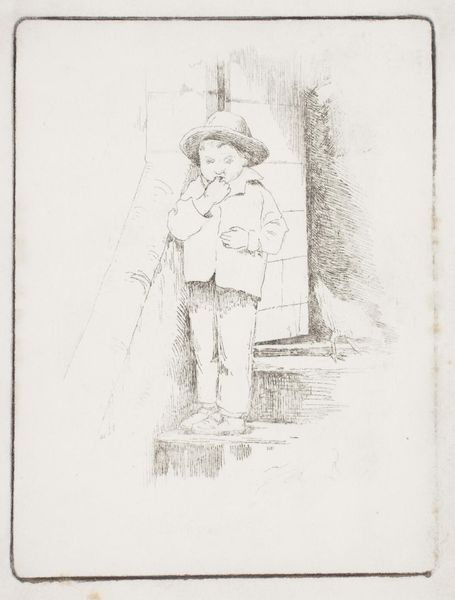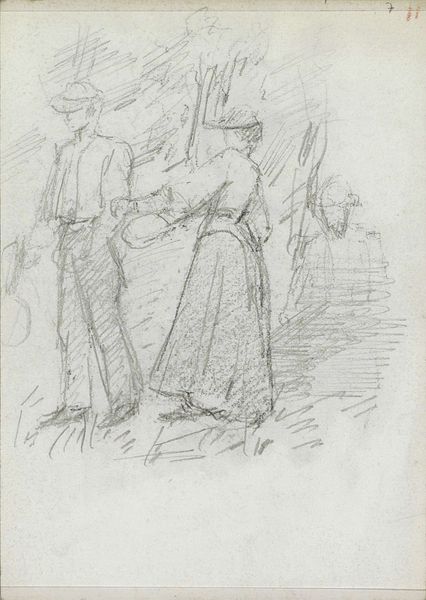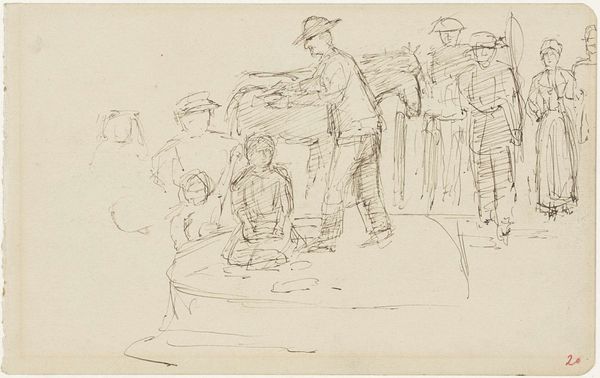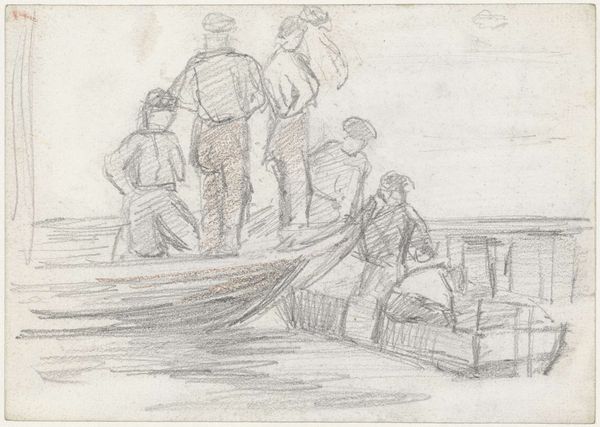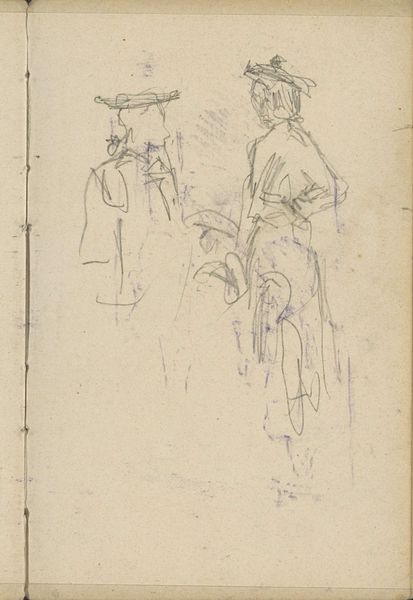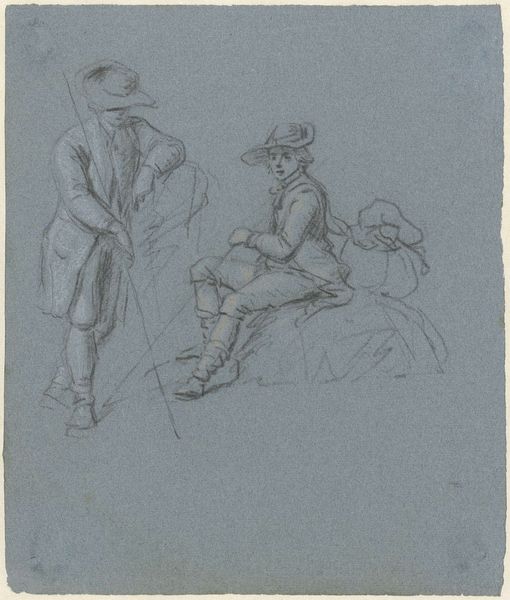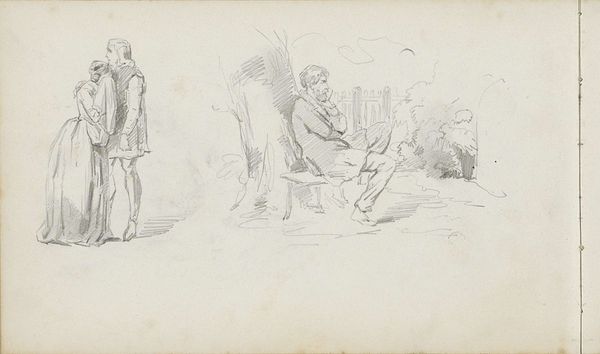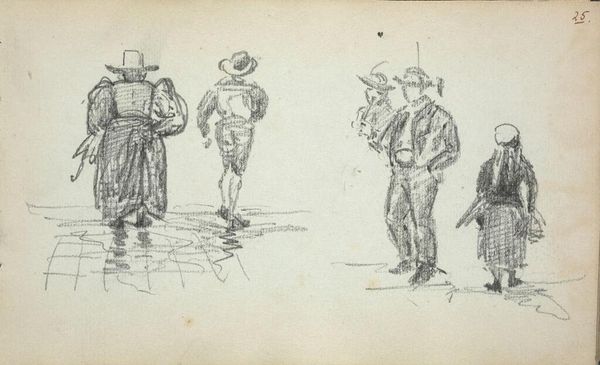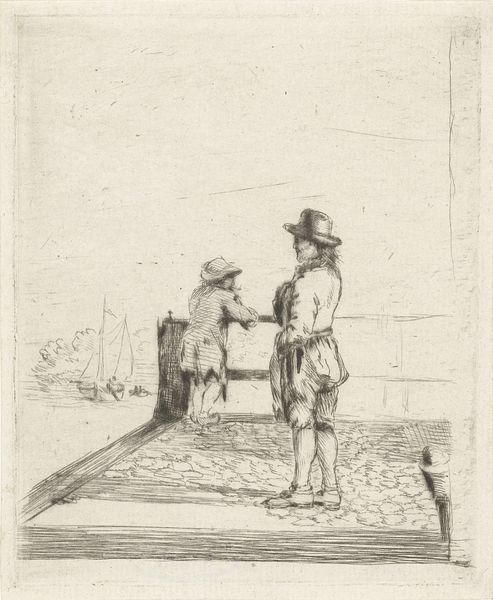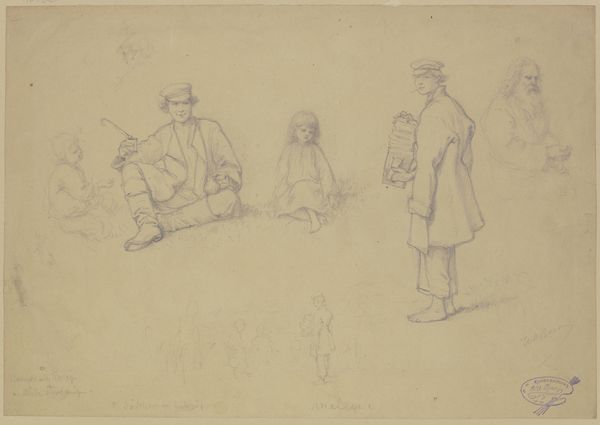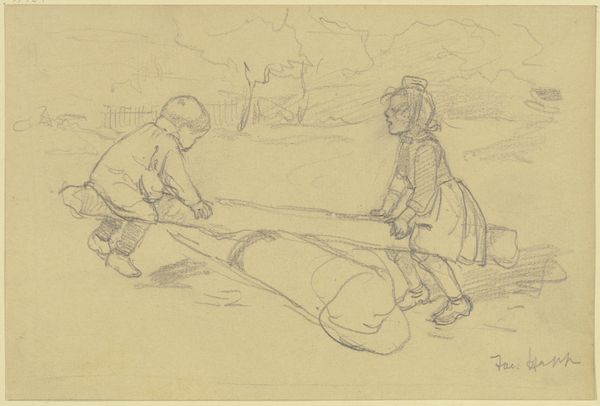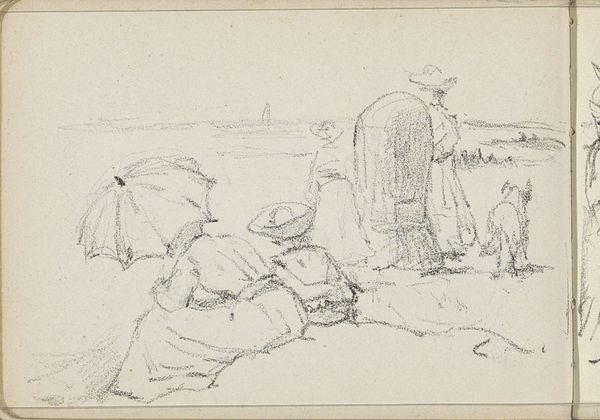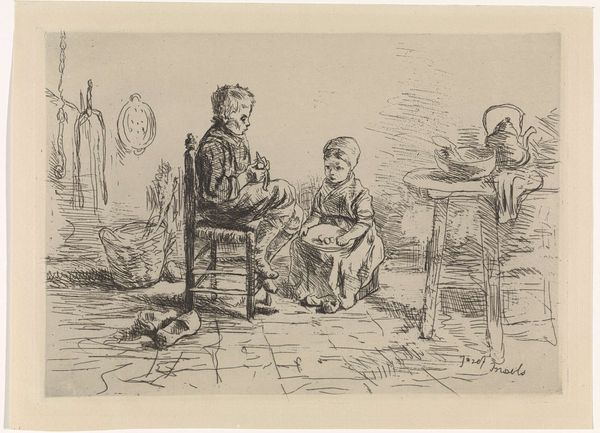
Man met een zeis en een liggende jongen bij een hek 1834 - 1903
0:00
0:00
johanhendrikweissenbruch
Rijksmuseum
Copyright: Rijks Museum: Open Domain
This is Johan Hendrik Weissenbruch's pencil drawing of ‘Man met een zeis en een liggende jongen bij een hek’. Weissenbruch, who lived from 1824 to 1903, was a Dutch painter associated with the Hague School, which captured the rural life and landscapes of the Netherlands in a style that was deeply rooted in the social and political climate of the time. Consider how class dynamics are depicted. The man with the scythe likely represents the working class, while the boy reclined against the fence possibly represents the leisure of youth. This drawing prompts reflections on the emotional connection to labor and rest. How does this imagery reflect or challenge the conventional representation of labor and leisure? The artist's personal experiences and observations shape his artistic choices, reflecting a blend of social commentary and an emotional narrative. It encapsulates a moment in time and reflects broader societal issues concerning labor, leisure, and the human connection to the land.
Comments
No comments
Be the first to comment and join the conversation on the ultimate creative platform.
